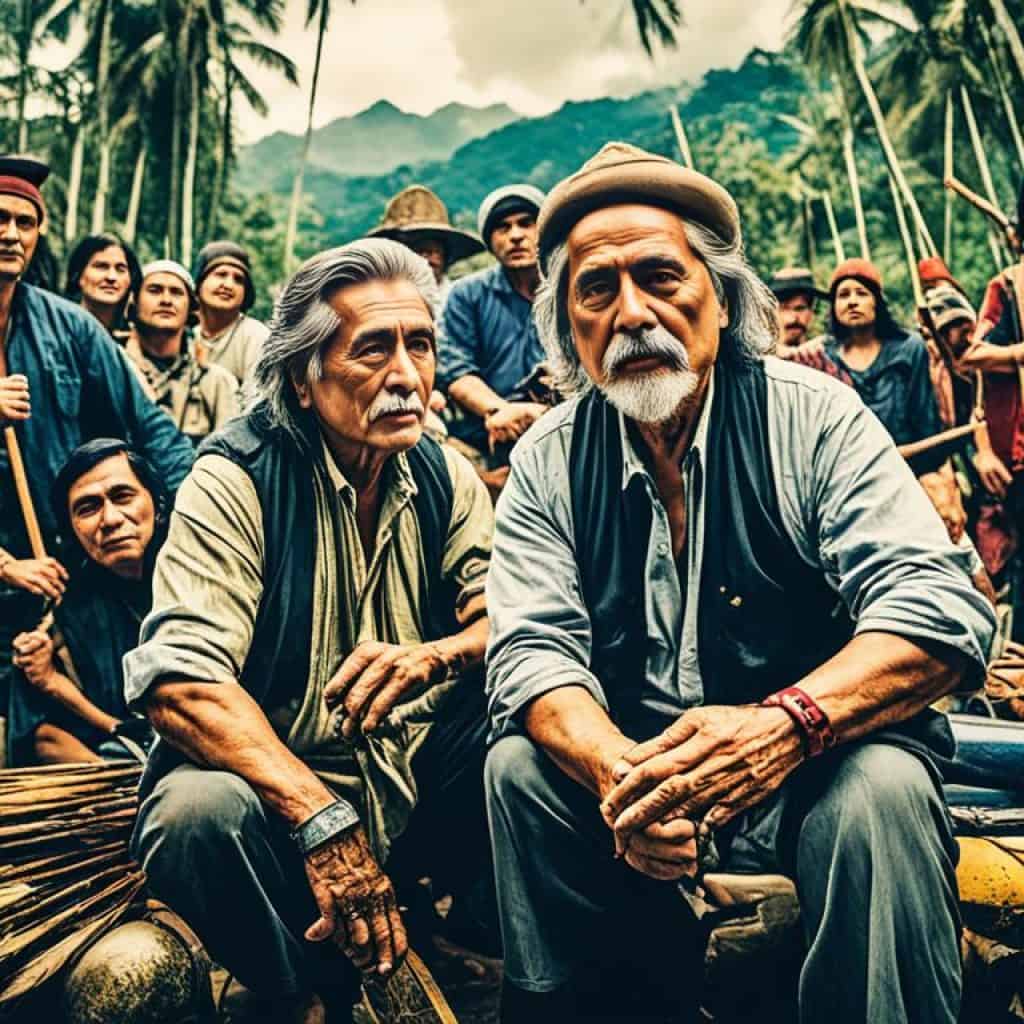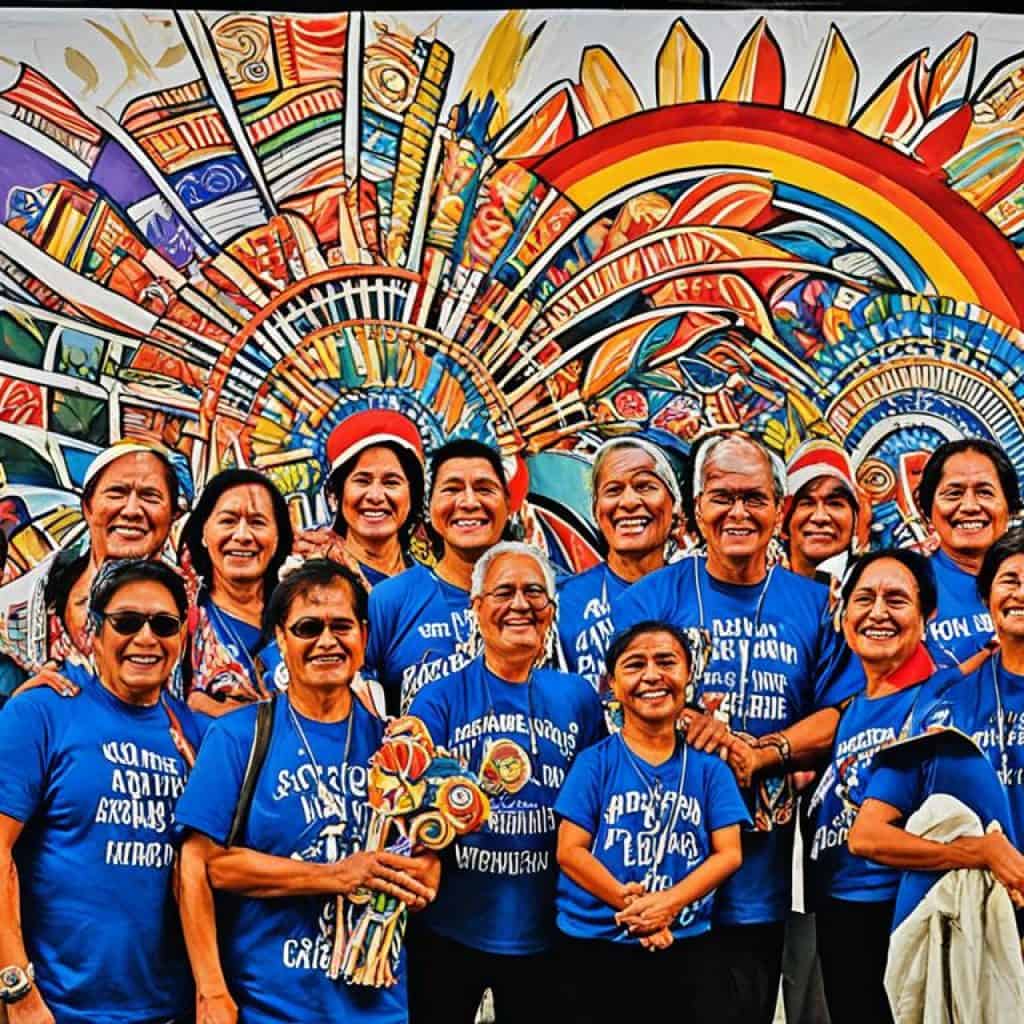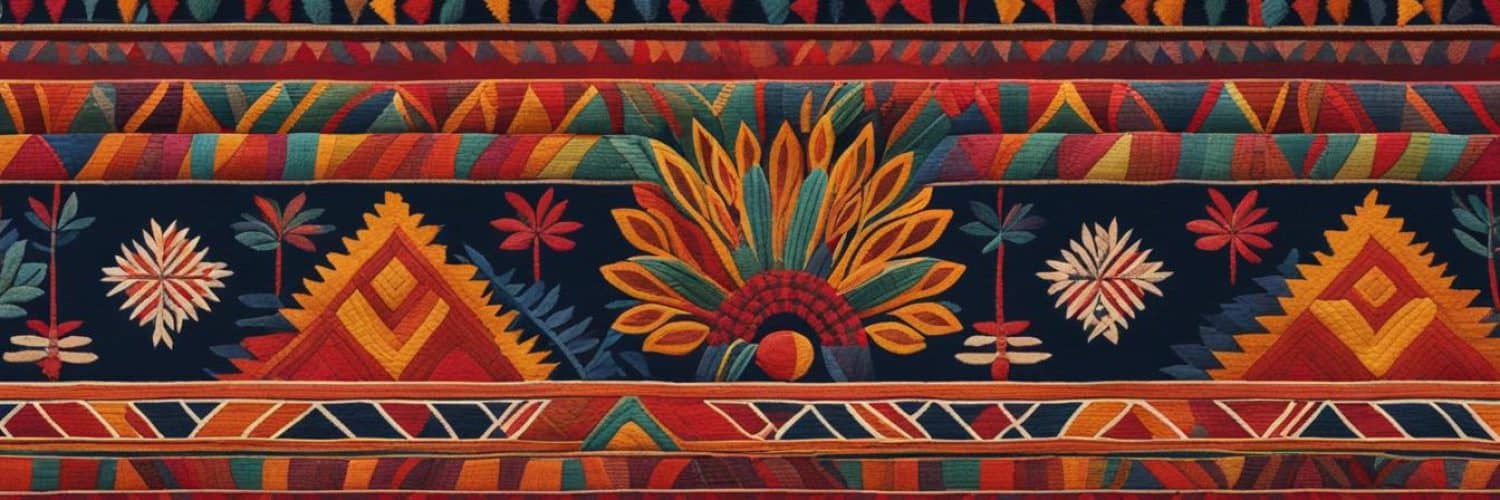What comes to mind when you think of the Philippines? Pristine beaches, delicious cuisine, and a rich cultural heritage, perhaps? While these are undoubtedly some of the country’s highlights, there is another aspect of Filipino culture that deserves recognition: the vibrant and diverse art scene. From traditional artisans to contemporary visionaries, the local artists in the Philippines are making their mark on the global stage, bringing their unique perspectives and talents to the forefront.
In this article, we will delve into the world of Filipino artists, exploring the traditional artistry passed down through generations as well as the groundbreaking contemporary works that challenge conventions and push boundaries. We will take you on a journey through the works of legendary masters and introduce you to emerging talents who are shaping the future of Philippine art. Get ready to be inspired, captivated, and surprised as we dive into the rich tapestry of creativity that thrives in the Philippines.
Key Takeaways:
- The art scene in the Philippines is vibrant and diverse, showcasing a range of artistic styles and mediums.
- From legendary artists like Fernando Amorsolo and José Joya to emerging talents, local artists in the Philippines contribute to the country’s rich artistic heritage.
- Art galleries in the Philippines provide platforms for artists to exhibit their works and contribute to the local art scene.
- The artistic diversity in the Philippines embraces traditional indigenous art forms, contemporary expressions, and everything in between.
- Keep reading to discover the fascinating world of Filipino talent and be introduced to the artists who are shaping the local art scene.
Fernando Amorsolo (1892-1972)
Fernando Amorsolo, also known as the “Grand Old Man of Philippine Art,” holds a prominent place in the country’s art history. Born in 1892, Amorsolo is considered the first National Artist of the Philippines, and his works continue to define the culture and heritage of the nation. He was known for his incredible talent and his unique use of the backlighting technique.
The backlighting technique employed by Amorsolo allowed him to capture the radiance of the Philippine sun in his colorful depictions of local scenes and people. This technique brought a distinct vibrancy and luminosity to his paintings, making them truly captivating and reflective of the Filipino spirit.
Despite physical challenges and difficult circumstances, Amorsolo remained prolific throughout his career. He was known to produce up to 10 paintings a month, showcasing his dedication and passion for his craft. His artworks beautifully portray Philippine landscapes, rural life, and everyday scenes, often depicting the simplicity and beauty of Filipino culture.
Amorsolo’s works beautifully capture the essence of the Philippines, showcasing the rich colors, warmth, and radiance that define the Filipino spirit.
Amorsolo’s contributions to Philippine art can be seen in various art galleries across the country. These galleries proudly display his masterpieces, allowing visitors to appreciate his artistic genius and immerse themselves in the beauty of his creations. From bustling urban landscapes to serene rural vistas, his paintings truly depict the soul of the Philippines.
| Key Information | |
|---|---|
| Full Name | Fernando Amorsolo |
| Nickname | Grand Old Man of Philippine Art |
| Birth | 1892 |
| Death | 1972 |
| Technique | Backlighting |
José Joya (1931-1995)
José Joya was a pioneering Filipino artist renowned for his significant contributions to Abstract expressionism, a movement that revolutionized modern art. His paintings were characterized by bold and vibrant colors, reflecting his deep connection with the picturesque Philippine landscapes and tropical wildlife. Through his artistic brilliance, Joya’s works captured the essence of the Philippine spirit, blending the beauty of nature with his unique artistic expression.
As one of the eminent figures in the advancement of modern art in the Philippines, Joya mastered the technique of gestural paintings, where he applied paint spontaneously to create dynamic and expressive compositions. This approach allowed him to infuse his works with energy and emotion, making them truly captivating and influential in the local art scene.
One of Joya’s notable works, “Granadean Arabesque,” exemplifies his abstract expressionist style and can be viewed at the Ateneo Art Gallery in Manila. This masterpiece showcases his exceptional command over form, color, and texture, leaving viewers in awe of his artistic vision.
Influence on Philippine Modern Art
Joya’s innovative approach to abstract expressionism revolutionized the art scene in the Philippines, inspiring a new generation of artists to experiment with bold colors, gestural brushwork, and immersive compositions. His ability to capture the essence of Philippine landscapes and his unbridled passion for artistic expression continue to be celebrated and admired by art enthusiasts and fellow artists alike.
Joya’s contributions to the art world extend beyond his artistic creations. He was also a respected educator, shaping the minds of aspiring artists as a professor at the College of Fine Arts in the University of the Philippines. His mentorship and guidance paved the way for the development and growth of modern art in the country, leaving a lasting impact on the artistic community.
Legacy
As a trailblazer in abstract expressionism and a champion of modern art in the Philippines, José Joya’s legacy endures. His works continue to inspire and captivate audiences, attracting visitors from around the world to experience the power and dynamism of his artistic vision. Through his contributions, Joya has cemented his place in history as one of the pillars of Philippine art.
Indeed, José Joya’s artistic achievements played a pivotal role in establishing the Philippines as a hub of artistic creativity and expression. His remarkable talent, profound understanding of color and form, and unwavering passion for innovation have left an indelible mark on the Philippine art scene, inspiring generations to embrace and explore the infinite possibilities of modern art.
| Birth | 1931 |
|---|---|
| Death | 1995 |
| Nationality | Filipino |
| Style | Abstract expressionism |
| Notable Work | “Granadean Arabesque” |
| Main Influences | Philippine landscapes, tropical wildlife |
| Art Institutions | Ateneo Art Gallery |
Pacita Abad (1946-2004)
Pacita Abad was an internationally revered Filipino artist known for her vibrant and multi-dimensional paintings. She developed a unique technique called “trapunto,” in which she stitched and stuffed her canvases with a wide range of materials to create a three-dimensional effect.
Abad’s works often depicted socio-political themes and were inspired by her travels across the globe. She participated in over 60 exhibitions worldwide, showcasing her talent and capturing the attention of art enthusiasts everywhere.
| Exhibition | Location |
|---|---|
| “Transitron” Exhibition | Museum of Modern Art, New York |
| “Colors of Cambodia” | Angkor Wat, Cambodia |
| “Tapestry of Life” | National Museum, Manila |
Abad’s ability to convey complex ideas through her art and her dedication to exploring new techniques made her an influential figure in the world of contemporary art. Her works can be found in prestigious art galleries and private collections worldwide.
Ang Kiukok (1935-2005)
Ang Kiukok was a remarkable Chinese-Filipino artist who holds the distinction of being the pioneer of Philippine modern figurative expressionism. His unique artistic style combined elements of cubism and surrealism, resulting in captivating portrayals that pushed the boundaries of artistic expression.
One of Ang Kiukok’s most notable works centered around the crucifixion of Christ and the theme of mother and child. These paintings displayed his deep exploration of faith, spirituality, and the human experience. In particular, his series titled “Fishermen at Sea” captured the energy, faith, and struggles of fishermen under a vibrant crimson sun, showcasing his masterful use of color and composition.
To truly appreciate the genius of Ang Kiukok, one must visit the galleries that house his works. Notable institutions include the Cultural Center of the Philippines, the National Historical Museum of Taipei, and the National Museum in Singapore. These venues provide a platform for art enthusiasts to immerse themselves in his extraordinary creations.
Ang Kiukok’s artistic contributions have left an indelible mark on the art world, both locally and internationally. His bold and powerful paintings continue to inspire and captivate audiences, reminding us of the immense talent that exists within the Philippines.
Ang Kiukok’s Works:
| Title | Year | Medium |
|---|---|---|
| Fishermen at Sea | 1973 | Oil on Canvas |
| The Crucifixion Series | 1982 | Oil on Canvas |
| Mother and Child | 1986 | Acrylic on Canvas |
“Ang Kiukok’s art speaks to the human experience with unparalleled depth and emotion. His use of vibrant color and bold brushstrokes create a sense of raw energy that draws viewers in and leaves a lasting impact.”
Benedicto Cabrera (1942-present)
Benedicto Cabrera, also known as BenCab, is a prominent figure in the local contemporary art scene and is considered the best-selling commercial painter of his generation. His works, including paintings, etchings, sketches, and prints, have been exhibited across Asia, Europe, and the United States. BenCab’s artistic style showcases a fusion of Filipino culture, history, and identity, making him a celebrated and influential artist in the Philippines and beyond.
One of his notable achievements is his establishment of the BenCab Museum in Baguio City. This museum serves as a sanctuary for the preservation and celebration of indigenous artifacts and contemporary Filipino art. Visitors to the BenCab Museum can immerse themselves in the rich cultural heritage of the Philippines while exploring the diverse artworks on display.
BenCab’s contributions to the local contemporary art scene have been recognized through various accolades, including being named a National Artist of the Philippines in 2006. His artistic prowess and dedication have not only elevated the standing of Filipino art but have also inspired a new generation of artists to embrace their roots and create meaningful expressions of Filipino culture and identity.
Kidlat Tahimik (1942-present)
Kidlat Tahimik is a critically acclaimed Filipino director and a key figure in the Philippine independent film movement. His films, which denounce neo-colonialism and the capitalist system, have garnered international recognition and have been featured in film festivals around the world.
One of Tahimik’s notable works is his debut film “Perfumed Nightmare” (1977), a semi-autobiographical film that explores the struggle of a young Filipino man caught between traditional village life and the allure of Western consumerism. The film gained attention for its unique storytelling style, blending documentary elements with fictional narratives.
In addition to his filmmaking, Tahimik is known for his artist café and vegetarian restaurant called Oh My Gulay, located in Baguio City. The café provides a space for artists and art enthusiasts to gather, creating a vibrant and creative atmosphere. Oh My Gulay serves as a hub for cultural exchange and discourse, reflecting Tahimik’s passion for nurturing artistic communities.
| Filmography | Awards |
|---|---|
|
|
Tahimik’s achievements in filmmaking and his dedication to promoting Philippine independent cinema have solidified him as an influential figure in the local and international film industry. His artistic vision and commitment to storytelling continue to inspire aspiring filmmakers and contribute to the diverse landscape of Philippine cinema.

Eduardo Masferré (1909-1995)
Eduardo Masferré, widely known as the Father of Philippine photography, made a significant impact on the art world through his exceptional documentation of the daily lives and rich cultural heritage of the indigenous people residing in the Cordilleras of the Philippines. His deep respect for their traditions and commitment to capturing their essence is evident in his magnificent body of work.
Masferré’s dedication to his craft extended beyond the artistry of his photographs. He processed his own film and produced prints without the luxury of electricity, showcasing his resourcefulness and unwavering passion for capturing the authentic beauty of the Cordilleras. His profound belief in the power of photography as a medium of storytelling has left an indelible mark on Philippine art history.
Recognized globally, Masferré’s exceptional photographs have been showcased in exhibitions worldwide, with the Smithsonian Institution housing a significant collection of his works. This esteemed institution recognizes the cultural importance and artistic mastery displayed in Masferré’s photographs, further solidifying his impact as a pioneer of Philippine photography.
Notable Works by Eduardo Masferré
| Title | Description |
|---|---|
| “People of the Philippine Cordillera Photographs 1934-1956” | A collection of photographs that vividly portrays the traditions, customs, and daily lives of the indigenous communities in the Cordillera region. |
| “Tribes of the Philippines” | A series of photographs that capture the diverse and vibrant indigenous cultures existing throughout the Philippines. |
| “Philippine Landscapes” | A visual journey through the breathtaking natural landscapes of the Philippines, showcasing the country’s diverse topography. |
Through his extraordinary photographs, Eduardo Masferré immortalized the rich cultural heritage of the indigenous people and provided a glimpse into their unique way of life. His legacy continues to inspire and educate future generations about the beauty and diversity of the Philippines.
Agnes Arellano (1949-present)
Agnes Arellano is a renowned sculptor known for her surrealist and expressionist work, often focusing on the female body and exploring themes of sexuality, religion, and mysticism. Her sculptures are crafted from various materials such as plaster, bronze, and cold-cast marble, creating pieces that evoke a sense of unity and harmony. Arellano’s unique artistic style captivates viewers and provokes introspection, inviting them to delve into the depths of the human experience.
Throughout her career, Arellano has exhibited her works in galleries both locally and internationally, gaining recognition for her thought-provoking and visually stunning sculptures. One of the notable galleries where her work can be appreciated is the Silverlens Gallery, which is known for showcasing contemporary art that pushes boundaries and challenges traditional notions.
The Female Form and Mysticism
Arellano’s exploration of the female body in her artwork goes beyond the physical. Her sculptures often depict the female form as a vessel of spirituality and mysticism, delving into the complex nature of feminine power and divine connection.
This focus on the female form allows Arellano to convey narratives of identity, spirituality, and the universality of the human experience. Through her art, she challenges societal norms and encourages viewers to question their own perspectives on gender, spirituality, and the interconnectedness of all beings.
“Art should lead us back to our inner selves and to the mysteries of our existence.”
Surrealist and Expressionist Techniques
Arellano’s sculptures embody the dreamlike and symbolic nature of surrealism, engaging viewers in a world where reality and the subconscious merge. The use of expressive forms and distorted figures invites introspection and contemplation, allowing viewers to explore their own subconscious and emotional landscapes.
The combination of surrealism and expressionism in Arellano’s work creates a powerful visual language that merges the internal and external realms, blurring the boundaries between the physical and metaphysical. Her art acts as a conduit for emotions, ideas, and spiritual experiences, inviting viewers to embark on a journey of self-discovery and contemplation.
Agnes Arellano’s Notable Exhibitions
| Exhibition | Year | Location |
|---|---|---|
| Mystic Rebels | 2018 | Silverlens Gallery, Philippines |
| Dreamscapes II: The Immersive Journey | 2016 | Art Plural Gallery, Singapore |
| Sculpting with Air | 2014 | New York Studio School of Drawing, Painting and Sculpture, United States |
Roberto Chabet (1937-2013)
Roberto Chabet was a prominent Filipino artist who played a pivotal role in shaping the art scene in the Philippines. Recognized as the father of conceptual art in the country, Chabet’s thought-provoking installations, collages, and sculptures challenged traditional art-making and thinking. He was a rebellious figure in the local art scene, pushing boundaries and exploring new artistic territories.
As a visionary artist, Chabet founded the Cultural Center of the Philippines, a significant institution that continues to promote and nurture artistic expression in the country. Through this center, Chabet provided a platform for artists to showcase their works and encouraged experimentation and innovation.
Furthermore, Chabet established the prestigious 13 Artists Awards, which celebrates and recognizes the achievements of young artists who embody a contemporary view of art. This initiative has been instrumental in supporting emerging talents and fostering a dynamic and forward-thinking art community in the Philippines.
Roberto Chabet’s influence on the local art scene is undeniable. His legacy can still be seen in the thriving cultural landscape of the Philippines, where artists continue to challenge norms, push boundaries, and explore new frontiers in conceptual art.

Quote:
“Art should be deeply rooted in its present culture and society.”
Key Accomplishments of Roberto Chabet
| Accomplishment | Details |
|---|---|
| Founder of the Cultural Center of the Philippines | Established a prominent institution for artistic expression and cultural promotion. |
| Father of Conceptual Art in the Philippines | Challenged traditional art-making and thinking, paving the way for innovative artistic practices. |
| Establishment of the 13 Artists Awards | Celebrated the achievements of young artists with a contemporary view of art, encouraging their development and recognition. |
Emerging Contemporary Filipino Artists
The Philippines is also home to a new generation of emerging contemporary artists who are making waves in the local and international art scenes. These artists are pushing artistic boundaries, exploring diverse mediums and themes, and contributing to the dynamic and evolving nature of Filipino art.
Artists Reflecting a Diversity of Creativity
Ernest Concepcion, Ronald Ventura, and Leeroy New are among the notable artists shaping the contemporary art landscape in the Philippines. Concepcion’s thought-provoking artworks often blend science, mythology, and pop culture, while Ventura’s intricate and dynamic paintings delve into themes of identity and social commentary. New’s immersive installations challenge traditional notions of art and blur the boundaries between reality and fantasy.
Other emerging contemporary Filipino artists include Oscar Villamiel, Dex Fernandez, Neil Pasilan, and Kawayan de Guia. Villamiel incorporates unconventional materials like beeswax and found objects into his sculptures, while Fernandez, known as “Garapata,” combines urban street art with traditional Filipino imagery. Pasilan’s multimedia installations explore the effects of globalization and consumerism, while de Guia’s visual artworks and videos reflect upon cultural history and societal issues.
The Influence of Female Artists
Female artists are also making a significant impact in the contemporary art scene. Patricia Perez Eustaquio’s delicate and ethereal pieces often revolve around themes of femininity and mortality, while Martha Atienza’s installations and videos shed light on environmental concerns and cultural traditions. These female artists bring unique perspectives and artistic expressions to the forefront.
Capturing the Filipino Experience
Elmer Borlongan, known for his dynamic and expressive style, creates artworks that encapsulate the everyday lives and struggles of ordinary Filipinos. His paintings offer a glimpse into the Filipino experience and evoke a sense of social empathy and connection.
| Artist | Artistic Style | Main Themes |
|---|---|---|
| Ernest Concepcion | Multimedia | Science, mythology, pop culture |
| Ronald Ventura | Painting, sculpture | Identity, social commentary |
| Leeroy New | Installation, sculpture | Reality, fantasy |
| Oscar Villamiel | Sculpture | Unconventional materials, found objects |
| Dex Fernandez | Street art | Urban imagery, Filipino culture |
| Neil Pasilan | Installation, mixed media | Globalization, consumerism |
| Kawayan de Guia | Visual art, video | Cultural history, societal issues |
| Patricia Perez Eustaquio | Painting, sculpture | Femininity, mortality |
| Martha Atienza | Installation, video | Environmental concerns, cultural traditions |
| Elmer Borlongan | Painting | Filipino experience, social empathy |
These emerging contemporary Filipino artists are redefining the boundaries of the art world, captivating audiences with their creativity, innovation, and unique perspectives. As they continue to evolve and gain international recognition, they contribute to the richness and diversity of Filipino art, cementing their places in the legacy of Philippine creativity.
Art Galleries in the Philippines
The art scene in the Philippines is thriving, with numerous art galleries showcasing the works of both established and emerging artists. These galleries not only provide a platform for artists to exhibit their works but also contribute to the vibrant art scene in Manila and beyond.
Some of the top art galleries in the country include:
- Cultural Center of the Philippines
- Silverlens Gallery
- Ateneo Art Gallery
- BenCab Museum
- Artinformal Gallery
These art galleries feature a wide range of art styles, from traditional to contemporary, and showcase the talent and creativity of Filipino artists. Visitors can explore a diverse collection of paintings, sculptures, installations, and other forms of artwork.
Whether you’re a seasoned art enthusiast or simply interested in immersing yourself in the Manila art scene, these art galleries are a must-visit. They offer a unique opportunity to appreciate the rich artistic heritage of the Philippines and discover the works of both established and up-and-coming artists.
“Art is the most profound means of expressing oneself, and these art galleries in the Philippines serve as valuable platforms for artists to showcase their talents and share their unique perspectives with the world. They contribute to the dynamic cultural landscape of Manila, fostering creativity and innovation in the local art scene.”
Artistic Diversity in the Philippines
The artistic landscape of the Philippines is a vibrant tapestry of artistic diversity, comprising various art styles, mediums, and expressions. Filipino artists draw inspiration from a wide range of influences, creating a rich and unique art scene that flourishes in Manila and beyond.
From traditional and indigenous art forms that celebrate the country’s cultural heritage to contemporary artworks that push boundaries and experiment with new techniques, Filipino artists showcase their artistic prowess in diverse ways.
Metro Manila, the capital city of the Philippines, acts as the melting pot of artistic innovation and creativity. The local art scene thrives in this bustling city, attracting artists from different backgrounds and disciplines who inspire and influence one another.
Contemporary Filipino art is a reflection of the country’s dynamic culture and ever-evolving artistic expressions. Artists blend traditional techniques with modern sensibilities, bringing forth artworks that resonate with both local and global audiences.
Indigenous art also has a significant presence in the Filipino art scene, showcasing the legacy and craftsmanship of various tribal communities. Artists embody the spirit of their ancestors, using their skills to create remarkable artworks that pay homage to their cultural roots.
Furthermore, Manila-based artists play a pivotal role in shaping and defining the artistic landscape of the Philippines. Their contributions to the local art scene are invaluable, as they bring forth fresh perspectives, narratives, and techniques.
Overall, the artistic diversity in the Philippines is a testament to the country’s rich cultural heritage and creative spirit. From the traditional to the contemporary, from the indigenous to the Manila-based, Filipino artists continue to captivate and inspire with their boundless creativity.

Conclusion
The Filipino art scene is a vibrant and dynamic landscape that showcases the immense talent and creativity of local artists in the Philippines. From legendary masters like Fernando Amorsolo and José Joya to emerging talents, Filipino artists capture the essence of their culture and heritage through a diverse range of styles, techniques, and themes.
The art galleries in the Philippines provide vital platforms for these artists to exhibit their works and engage in artistic dialogue, both at home and on the international stage. Through their innovative and thought-provoking creations, local artists contribute significantly to the ever-evolving art scene in the country.
With their unique perspectives and artistic expressions, local artists continue to establish the Philippines as a hub of creativity and artistic prowess. As the art scene in the Philippines continues to flourish, the contributions of these talented individuals will shape and define the future of Filipino art, inspiring and captivating audiences around the world.


















Add comment